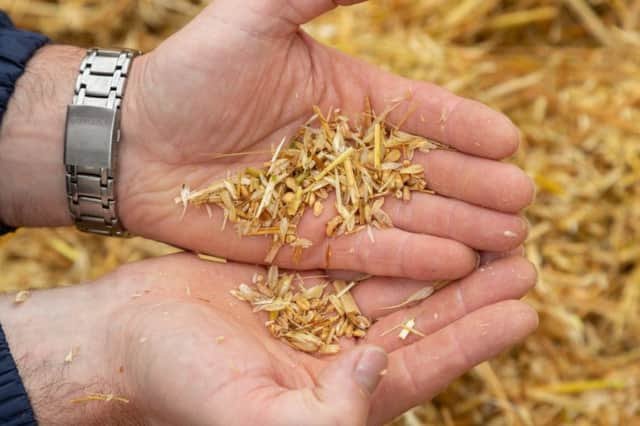Effective grain processing whenharvesting Wholecrop cereals for silage


The crop was drilled on October 2017. The crop was treated with an additive at harvest.
This year the crop was more mature than normal, probably due to the warm dry conditions through most of July. Moisture content of the grain was 26% on 31 July, equivalent to grain dry matter of 74%. At this grain dry matter, it is essential that the harvester is fitted with effectively adjusted grain processing equipment to ensure that the grain is adequately cracked. During harvesting at Greenmount, the equipment was adjusted for optimum grain processing and operated at moderate throughput to allow time for grain cracking. Inadequate processing will lead to undigested grains passing through the animal into the dung
Advertisement
Hide AdAdvertisement
Hide AdFor farmers harvesting wholecrop cereals where the grain is more than 35 to 45% dry matter, it is essential to check the harvested crop to ensure that all grain is being sufficiently cracked. The following list of factors will all influence the effectiveness of a crop processor on a self-propelled forage harvester (SPFH):
1. Number of teeth on the feed rollers of the crop processor – these can be changed to suit the crop on most harvesters.
2. Roller clearance – the gap between rollers can be set typically on a scale of 1 -10 from within the cab. Use the lowest setting necessary to ensure all grains are being processed.
3. Roller speeds - pulleys can be changed on each roller to modify the speeds and hence the speed difference for more aggressive processing of the grains.
Advertisement
Hide AdAdvertisement
Hide Ad4. Roller orientation - most rollers have teeth with a non-symmetrical tooth profile or cross section. The roller orientation can be changed to suit the requirements.
5. Ensuring rollers are clean and free from crop residue - using rollers which are too fine (by having excessive teeth) and unsuitable for the crop could result in the rollers building up with crop residue and smoothing over. As a result, effective processing of the grains is limited.
6. Consistent Crop flow - crop flow into the machine should be consistent with the full operating width of the cutting head being used and a constant forward speed maintained.
7. Chop length - should be reduced on the harvester. Reducing the feed roller speed and hence the crop flow through the harvester, allows the crop processor to do its job more effectively. This will affect the harvester throughput and work rate but will ensure consistency in the processing of the grains.
Advertisement
Hide AdAdvertisement
Hide AdOther points to consider to minimise field losses during harvesting;
· Trailers with solid sides and hydraulic opening rear doors with limited openings are ideal
· Avoid over filling trailers
· Trailers should be operated as close as possible to the harvester, particularly when opening up fields